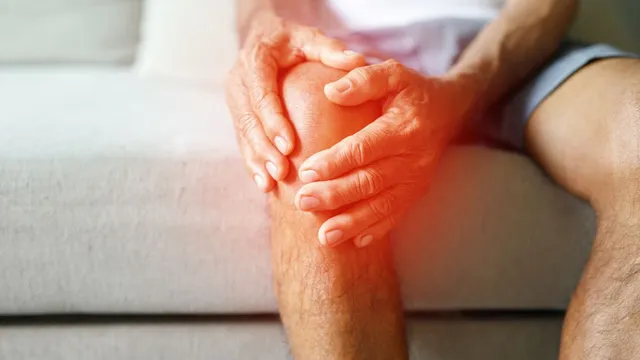Joint pain and arthritis are common problems in both older and younger people. These conditions affect daily life, making even simple tasks painful. People often turn to modern medicine for quick relief, but side effects and long-term dependence on painkillers are a concern. In recent years, many have looked towards Ayurveda, India’s ancient system of healing, for a more natural solution.
But can Ayurveda really cure joint pain and arthritis? Let’s understand the facts, and get insights from Ayurvedic doctors.
What is Joint Pain and Arthritis?
Contents
- 1 What is Joint Pain and Arthritis?
- 2 Symptoms include:
- 3 What is Ayurveda’s View on Joint Pain?
- 4 According to Dr. Rajesh Mishra, an experienced Ayurvedic doctor:
- 5 Can Ayurveda Cure Joint Pain and Arthritis?
- 6 Overview Table: Ayurveda vs Modern Treatment for Joint Pain
- 7 What Doctors Recommend
- 8 Tips from Ayurveda to Manage Joint Pain
- 9 Final Thoughts: Can Ayurveda Truly Help?
- 10 Latest Updates
Joint pain usually refers to discomfort, soreness, or inflammation in any part of the joint such as knees, elbows, fingers, or shoulders. Arthritis is a more serious condition and is mostly a long-term inflammation of the joints. There are many types of arthritis, but the two most common are:
- Osteoarthritis (OA): Happens due to wear and tear of joints, mostly seen in old age.
- Rheumatoid Arthritis (RA): An autoimmune disorder where the body attacks its own joints.
Symptoms include:
- Pain in joints
- Swelling
- Stiffness
- Reduced movement
What is Ayurveda’s View on Joint Pain?
In Ayurveda, joint pain and arthritis are considered the result of imbalanced doshas — mainly Vata dosha. Vata is responsible for movement in the body. When it gets disturbed, it causes “Sandhivata” (osteoarthritis) or “Amavata” (rheumatoid arthritis).
According to Dr. Rajesh Mishra, an experienced Ayurvedic doctor:
“Ayurveda does not just focus on symptoms; it treats the root cause. Our goal is to balance the doshas, remove toxins (Ama), and strengthen the joints.”
Can Ayurveda Cure Joint Pain and Arthritis?
Cure is a strong word. Ayurveda aims more at long-term relief and management rather than a quick fix. With proper treatment, many patients have seen great improvements and even complete freedom from joint pain.
However, Ayurveda works slowly and needs discipline. The approach includes:
1. Herbal Medicines
Some commonly used herbs include:
- Ashwagandha – reduces inflammation and strengthens muscles
- Guggul – powerful anti-inflammatory
- Shallaki (Boswellia) – good for joint flexibility
- Nirgundi – relieves pain and swelling
2. Panchakarma Therapy
This is a cleansing treatment that removes toxins from the body. Therapies like:
- Abhyanga (oil massage)
- Swedana (steam therapy)
- Basti (medicated enema)
are commonly used to treat joint conditions.
3. Diet & Lifestyle Changes
Eating a warm, easily digestible diet, avoiding cold foods, and maintaining regular sleep help balance the Vata dosha.
Dr. Mishra says:
“A person’s diet and habits are 50% of the treatment in Ayurveda. Without correcting lifestyle, even the best medicines won’t help.”
Overview Table: Ayurveda vs Modern Treatment for Joint Pain
| Feature | Ayurveda Treatment | Modern Treatment |
| Approach | Natural and holistic | Focuses on symptoms |
| Medicines | Herbal and oil-based | Painkillers, steroids |
| Side Effects | Very minimal | Common (gastric issues, kidney strain) |
| Speed of Relief | Slow but steady | Fast but temporary |
| Long-term Benefits | Yes, with consistency | Often temporary |
| Detoxification (Panchakarma) | Yes | No |
| Lifestyle/Diet Included | Yes, very important | Rarely addressed |
What Doctors Recommend
Most Ayurvedic doctors agree that a complete cure depends on:
- How long the person has had arthritis
- Type of arthritis (OA or RA)
- The person’s body constitution (Prakriti)
- How well the patient follows the treatment plan
For early stages, Ayurveda can provide full relief. For chronic or advanced cases, it may not reverse the damage but can reduce pain, stop further damage, and improve joint movement.
Tips from Ayurveda to Manage Joint Pain
- Drink warm water to help digestion and flush toxins.
- Avoid cold and processed foods.
- Do light exercises or yoga, especially stretching.
- Use Mahanarayan or Dhanwantharam oil for daily massage.
- Include turmeric, ginger, fenugreek in your food.
Final Thoughts: Can Ayurveda Truly Help?
Yes Ayurveda can help in curing and managing joint pain and arthritis, especially if started early. It may not give instant relief like allopathy, but it offers a safe, natural, and long-lasting solution.







